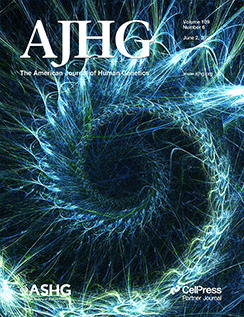The Indian Ocean slave trade and colonial expansion resulted in strong sex-biased admixture in South Africa.
IF 8.1
1区 生物学
Q1 GENETICS & HEREDITY
引用次数: 0
Abstract
The colonial-period arrival of Europeans in southern Africa is associated with strong sex-biased migration by which male settlers displaced Indigenous Khoekhoe and San men. Concurrently, the importation of enslaved individuals from South Asia, Indonesia, and eastern Africa likely contributed to female-biased migration. Using genetic data from over 1,400 individuals, we examine the spatial and temporal spread of sex-biased migration from the Cape to the northern edges of the historic colonial frontier. In all regions, admixture patterns were sex biased, with evidence of a greater male contribution of European ancestry and greater female contribution of Khoe-San ancestry. While admixture among Khoe-San, European, equatorial African, and Asian groups has likely been continuous from the founding of Cape Town to the present day, we find that Khoe-San groups further north experienced a single pulse of European admixture 6-8 generations ago. European admixture was followed by additional Khoe-San gene flow, potentially reflecting an aggregation of Indigenous groups due to disruption by colonial interlopers. Male migration into the northern frontier territories was not a homogenous group of expanding Afrikaners and slaves. The Nama exhibit distinct founder effects and derive 15% of their Y chromosome haplogroups from Asian lineages, a pattern absent in the ≠Khomani San. Khoe-San ancestry from the paternal line is greatly diminished in populations from Cape Town, the Cederberg Mountains, and Upington but remains more frequent in self-identified Indigenous ethnic groups. Strikingly, we estimate that Khoe-San Y chromosomes were experiencing unprecedented population growth at the time of European arrival. Our findings shed light on the patterns of admixture and population history of South Africa as the colonial frontier expanded.印度洋的奴隶贸易和殖民扩张导致了南非强烈的性别偏见。
殖民时期欧洲人到达南部非洲与强烈的性别偏见移民有关,男性定居者取代了土著的Khoekhoe和San men。与此同时,从南亚、印度尼西亚和东非进口的奴隶很可能助长了偏向女性的移民。利用来自1400多个个体的遗传数据,我们研究了从开普到历史殖民边界北部边缘的性别偏见迁移的时空分布。在所有地区,混合模式都是性别偏倚的,有证据表明欧洲血统的男性贡献更大,hoe- san血统的女性贡献更大。虽然从开普敦的建立到现在,Khoe-San群体与欧洲人、赤道非洲人和亚洲人之间的混合可能是连续的,但我们发现,更北的Khoe-San群体在6-8代之前经历了一次欧洲混合的单一脉冲。欧洲人的混合之后是更多的Khoe-San基因流动,可能反映了由于殖民地入侵者的破坏而导致土著群体的聚集。进入北部边境地区的男性移民并不是由不断扩张的阿非利卡人和奴隶组成的同质群体。Nama人表现出明显的创始人效应,他们的Y染色体单倍群中有15%来自亚洲血统,而这种模式在≠Khomani San中是不存在的。来自父系的Khoe-San血统在开普敦,Cederberg山脉和Upington的人口中大大减少,但在自我认定的土著民族群体中仍然更常见。引人注目的是,我们估计,在欧洲人到来的时候,Khoe-San Y染色体正在经历前所未有的人口增长。我们的研究结果揭示了随着殖民边界的扩大,南非的混合模式和人口历史。
本文章由计算机程序翻译,如有差异,请以英文原文为准。
求助全文
约1分钟内获得全文
求助全文
来源期刊
CiteScore
14.70
自引率
4.10%
发文量
185
审稿时长
1 months
期刊介绍:
The American Journal of Human Genetics (AJHG) is a monthly journal published by Cell Press, chosen by The American Society of Human Genetics (ASHG) as its premier publication starting from January 2008. AJHG represents Cell Press's first society-owned journal, and both ASHG and Cell Press anticipate significant synergies between AJHG content and that of other Cell Press titles.

 求助内容:
求助内容: 应助结果提醒方式:
应助结果提醒方式:


